Related Research Articles

Field Marshal Sir Robert Rich, 4th Baronet was a British cavalry officer. As a junior officer he fought at the Battle of Schellenberg and at the Battle of Blenheim during the War of the Spanish Succession. He was then asked to raise a regiment to combat the threat from the Jacobite rising of 1715. He also served with the Pragmatic Army under the Earl of Stair at the Battle of Dettingen during the War of the Austrian Succession. As a Member of Parliament he represented three different constituencies but never attained political office.

Sir George Nugent, 1st Baronet, GCB was a British Army officer. After serving as a junior officer in the American Revolutionary War, he fought with the Coldstream Guards under the Duke of York during the Flanders Campaign. He then commanded the Buckinghamshire Volunteers in the actions of St. Andria and Thuyl on the river Waal and participated in the disastrous retreat from the Rhine. He went on to be commander of the northern district of Ireland, in which post he played an important part in placating the people of Belfast during the Irish Rebellion, and then became Adjutant-General in Ireland. He went on to be Governor of Jamaica, commander of the Western District in England, commander of the Kent District in England and finally Commander-in-Chief, India.

General Sir Hew Whitefoord Dalrymple, 1st Baronet was a Scottish general in the British Army and Governor of Gibraltar.
The 58th (Rutlandshire) Regiment of Foot was a British Army line infantry regiment, raised in 1755. Under the Childers Reforms it amalgamated with the 48th (Northamptonshire) Regiment of Foot to form the Northamptonshire Regiment in 1881.
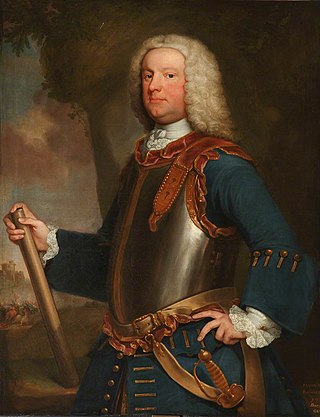
Lieutenant-General Richard Onslow was a British Army officer and politician. After the death of their parents, his older brother Arthur bought him a captain's commission in the British Army. He first saw action in the Anglo-Spanish War in 1727, after which he was returned to Parliament for the family borough of Guildford. His political contributions were negligible in comparison to his brother, and he continued to serve as a career officer, holding commands in the War of the Austrian Succession at Dettingen and Fontenoy. In 1759, he was appointed Governor of Plymouth and commander of the Western District, and died as a lieutenant-general the following year while presiding over two prominent courts-martial.
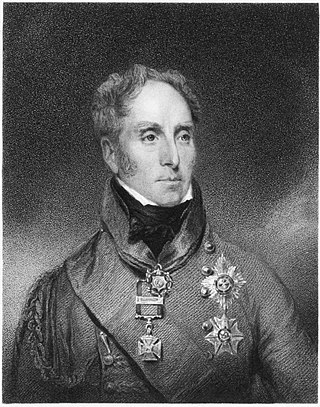
Lieutenant-General Sir James Leith was a Scottish soldier who served in the British Army, commanding the 5th Division in the Duke of Wellington's Anglo-Portuguese Army at several critical battles during the Peninsular War between 1810 and 1813.
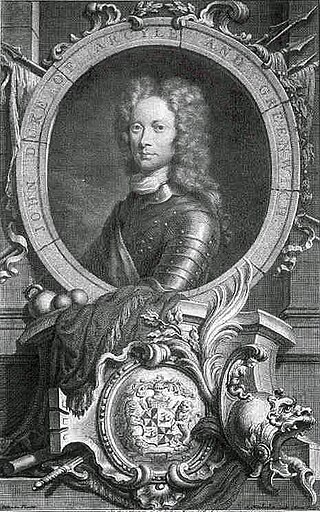
Brigadier General Richard Kane (1662–1736) was an Irish soldier who served in the British Army. He is particularly associated with the island of Minorca.
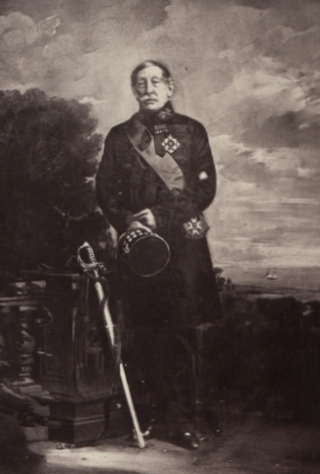
Field Marshal Sir Alexander George Woodford, GCB, KCMG, was a British Army officer. After taking part in the Anglo-Russian invasion of Holland, he served in most of the battles of the Napoleonic Wars. During the Hundred Days he commanded the 2nd battalion of the Coldstream Guards at the Battle of Quatre Bras, the Battle of Waterloo and the storming of Cambrai. He went on to become lieutenant governor and brigade commander at Malta, lieutenant governor and brigade commander at Corfu and then commander of the British garrison on the Ionian Islands before being appointed Governor and Commander-in-Chief of Gibraltar.

General Joseph Sabine was a British Army officer who fought in the Nine Years' War, the War of Spanish Succession and the Jacobite rising of 1715. He was later a politician who sat in the House of Commons from 1727 to 1734, becoming Governor of Gibraltar in 1730.

General Sir Charles Wills was a British Army officer and politician who served as Lieutenant-General of the Ordnance sat as a member of parliament for Totnes from 1718 to 1741.
General Sir William Houston, 1st BaronetKC was a British Army officer and Governor of Gibraltar. Houston joined the army in 1781, and by the start of the French Revolutionary War was a captain. He fought in the Flanders campaign before being promoted to major in 1794. As a lieutenant-colonel he fought at the Capture of Minorca and at the sieges of Alexandria and Cairo. Promoted to colonel in 1802, Houston fought in the Walcheren Expedition of 1809 before being promoted to major-general.
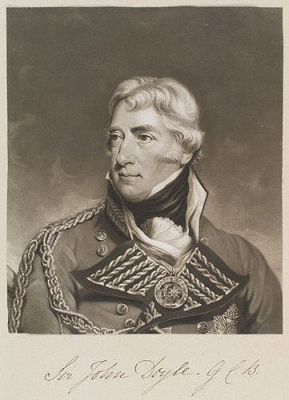
General Sir John Doyle, 1st Baronet GCB, KCH was an Irish officer in the British Army, which he joined in March 1771. He served with distinction in the American War of Independence and the French Revolutionary Wars.
General Sir Philip Honywood KB was a British Army officer.
Lieutenant-General John Folliot or Folliott was an officer of the British Army.
Major-General John Moyle was an officer of the British Army.

General Hugh Warburton was an officer of the British Army and fought in the French and Indian War with the 45th Regiment of Foot. He later commanded the 27th Regiment of Foot during the Seven Years' War.

General Sir George Townshend Walker, 1st Baronet, GCB ComTE was a British Army officer. He joined the army in 1782, but after his first two regiments were quickly disbanded, he joined the 36th Regiment of Foot stationed in India in 1784. He returned to England in 1787 suffering from an illness, and became aide de camp to General Thomas Bruce in Ireland. After being promoted to captain lieutenant, Walker studied German and tactics in Germany until he was promoted to captain in the 60th Regiment of Foot in 1791. When the French Revolutionary War began in 1793, he took a force of volunteers to reinforce the Flanders Campaign, where he fought at the Battle of Tournay. He was appointed Inspector of Foreign Corps while serving on the continent, and as such helped form Roll's Regiment for British service. He took them to England in 1796, and having been promoted to major he went to serve in Portugal in 1797. Here Walker again served as an aide de camp, to at first Major-General Simon Fraser and then the Prince of Waldeck.
Sir John Milley Doyle KCB was an Anglo-Irish soldier who fought in the Peninsular War and in the War of the Two Brothers.
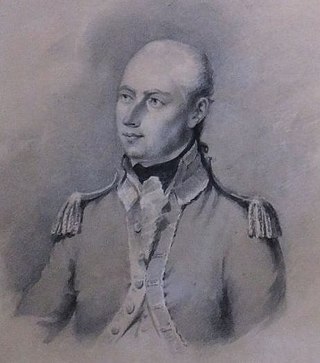
General William Grinfield was a British Army officer who served during the French Revolutionary and Napoleonic Wars. Grinfield joined the 3rd Regiment of Foot Guards in 1760 and was promoted through the ranks, becoming a major in the regiment in 1786. In 1793 his regiment joined the Flanders Campaign, fighting at the siege of Valenciennes and Battle of Lincelles, during which time he was promoted to lieutenant-colonel. Having held a higher army-wide rank than he did regimental rank, Grinfield was promoted by seniority to major-general later in the same year.
References
- 1 2 3 4 5 6 7 Charles Dalton, English Army Lists and Commission Registers 1661-1714, volume VI (London, 1904) p. 349.
- 1 2 3 4 Richard Cannon, Historical Record of the Thirty-Ninth, or the Dorsetshire Regiment of Foot (London, 1853) p. 106.
- ↑ Jackson, Sir William G.F.: The Rock of the Gibraltarians: A History of Gibraltar (Gibraltar: Gibraltar Books Ltd., 2001) p.334-5